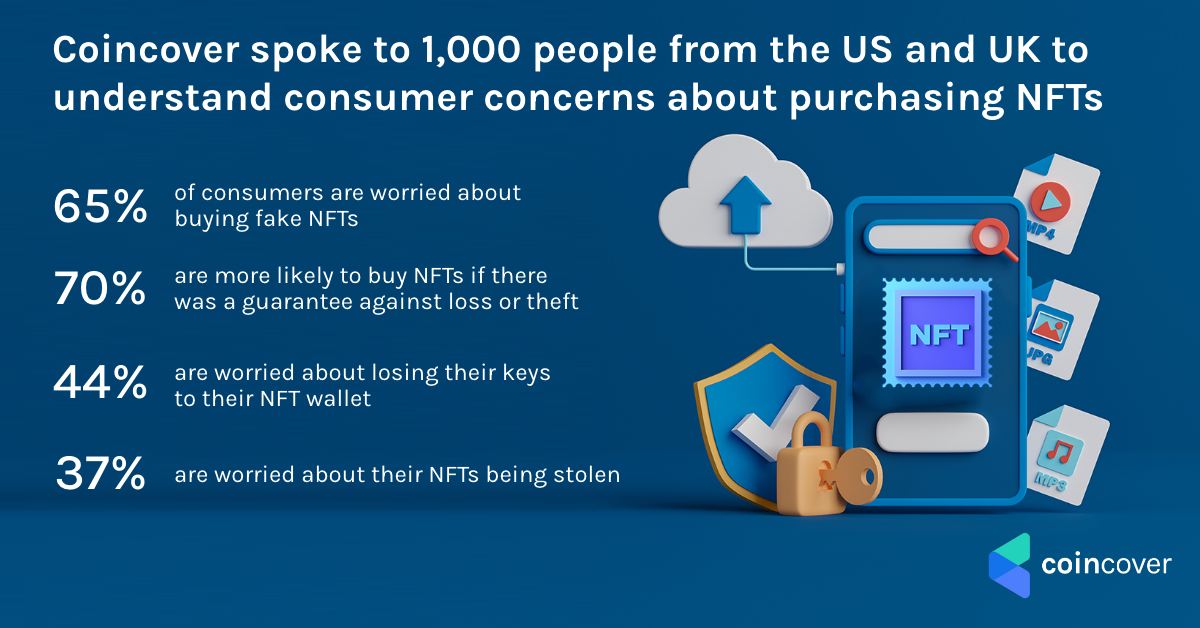CoinCover helps VirgoCX, Netcoins comply
New partnerships will help Canadian crypto exchanges exceed regulatory demands and protect customer funds
Art theft is nothing new, in fact it goes as far back at the 1400s when Polish pirates stole Hans Memling’s, The Last Judgement from a ship headed to Italy. Since then, art crime has matured with the times, not only because of technological advances available to criminals, but also from the evolution of art itself and the way we store art.
The introduction of Non-Fungible Tokens (NFTs) in 2014 followed by more mainstream adoption in 2017 has brought a whole new chapter to the world of art crime. Here’s what you need to know.
What are NFTs?
An NFT is an asset in the digital world which can be bought and sold online where ownership of the digital asset is recorded on the blockchain. Sound familiar? They are very similar to cryptocurrency, but the difference is that they are unique, can’t be divided and cannot replaced by something else. For example, Bitcoins are fungible, if you had one Bitcoin and swapped it for another Bitcoin, you’d have exactly the same as what you started with. On the other hand, a Non-Fungible Token is a bit like a one-of-a-kind trading card and can represent digital artwork, music, photos, gaming objects and even tweets.
What is the appeal of NFTs?
2021 saw an explosion in NFT popularity, with celebrities including Reece Witherspoon, Gwyneth Paltrow and Snoop Dogg displaying NFT art as their Twitter profile pictures and auction houses such as Christie’s and Sotheby’s taking to selling NFT art. Being such a close relative to crypto, the hype surrounding NFTs has certainly stemmed from that but it is likely that an impending metaverse has really driven the appetite for creatives and investors showing an interest in the space.
Of course, there is a financial appeal too, with NFTs quickly becoming high value assets such as Beeple's NFT, "Everydays: the first 5000 days" reaching $69.3m at auction in 2021.
What are the risks of NFTs?
The risks associated with NFTs are very similar to those associated with crypto risks and cyber-crime in general.
These risks can be broadly categorized as follows:
Coincover recently surveyed 1,000 NFT traders to understand their major concerns. The survey of 1,000 US and UK consumers revealed 65% are aware of the rise of fraud in the space and want to guard themselves against purchasing fake NFTs.
Additionally, the market has become a hot target for scammers. These attacks are more sophisticated than ever making them easy to fall for. In February 2022, £1.7m was stolen from Opensea users through a phishing attack where a hacker exploited an aspect of the Wyvern Protocol (an open-source asset exchange protocol running on Ethereum) designed to give flexibility. Concern for NFTs being stolen was reflected in the survey, where 37% of respondents said they worried about NFT theft.
Lack of sufficient safeguards remains a top concern, with 44% of survey participants wanting to ensure they don’t lose access to their NFT account. The research also revealed that consumers want more protection with 70% of those interviewed stating they would be more open to purchasing NFTs if they were protected against loss and theft.
It's clear there is an interest in NFTs, but, as we have seen with the crypto curious, security concerns are a barrier to purchase and mass uptake.

New partnerships will help Canadian crypto exchanges exceed regulatory demands and protect customer funds
The crypto industry is rapidly evolving, and with it, the ever-shifting regulatory environment. With big global players like BlackRock eyeing the crypto arena with their Spot Bitcoin ETF application,...